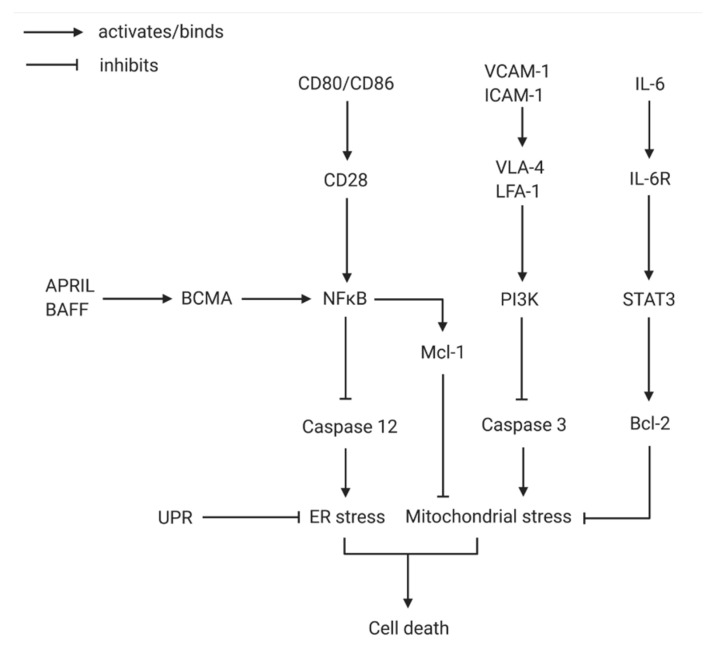Figure 1.
The network of molecular interactions preventing plasma cell death. Due to the plasma cells’ purpose as antibody mass-producers, ER and mitochondrial stress emerge easily. The activation of NF-κB via CD80/86 binding to CD28 and APRIL/BAFF stimulating BCMA leads to the inhibition of caspase 12, an important factor in ER stress induced cell death. UPR is the main mechanism working against ER stress. By inducing the expression of Mcl-1, NF-κB additionally stifles mitochondrial stress. Mitochondrial stress is further suppressed by inhibition of caspase 3 via stromal-cell-contact-induced PI3K. Furthermore, Bcl-2 is known as a crucial antagonist of mitochondrial stress-inducing proteins and is located at the end of the IL-6 signaling cascade. ER, endoplasmic reticulum; UPR, unfolded protein response (Created with BioRender.com).

